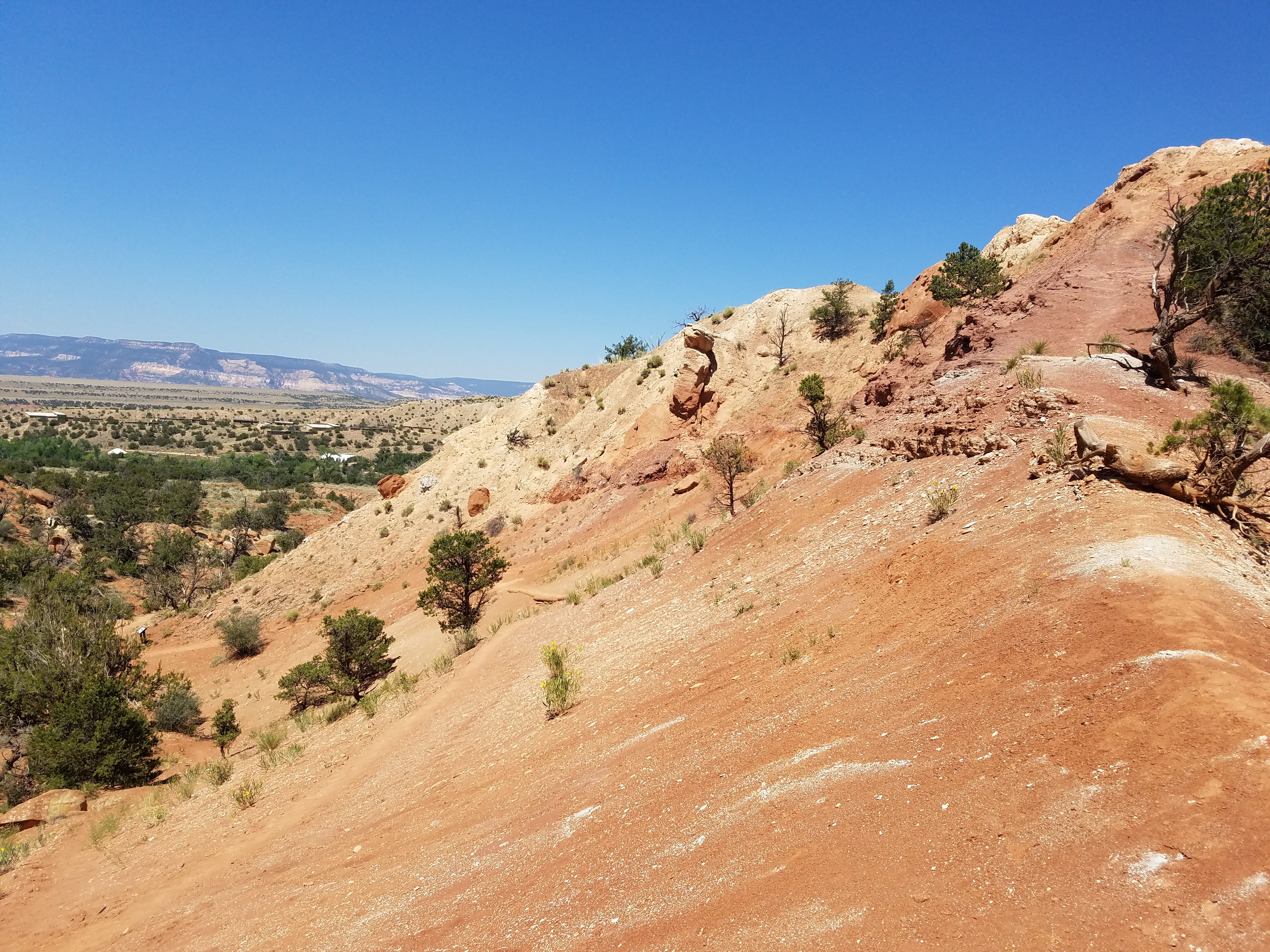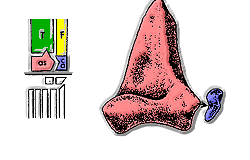|
Epipophyses
Epipophyses are bony projections of the cervical vertebrae found in archosauromorphs, particularly dinosaurs (including some basal birds). These paired processes sit above the postzygapophyses on the rear of the vertebral neural arch. Their morphology is variable and ranges from small, simple, hill-like elevations to large, complex, winglike projections. Epipophyses provided large attachment areas for several neck muscles; large epipophyses are therefore indicative of a strong neck musculature. The presence of epipophyses is a synapomorphy (distinguishing feature) of the group Dinosauria. Epipophyses were present in the basal-most dinosaurs, but absent in the closest relatives of the group, such as ''Marasuchus'' and '' Silesaurus''. They were typical for most dinosaur lineages; however, they became lost in several derived theropod lineages in the wake of an increasingly S-shaped curvature of the neck. Several scientific papers have observed that epipophyses were present in vari ... [...More Info...] [...Related Items...] OR: [Wikipedia] [Google] [Baidu] |
Dinosaur
Dinosaurs are a diverse group of reptiles of the clade Dinosauria. They first appeared during the Triassic period, between 243 and 233.23 million years ago (mya), although the exact origin and timing of the evolution of dinosaurs is the subject of active research. They became the dominant terrestrial vertebrates after the Triassic–Jurassic extinction event 201.3 mya; their dominance continued throughout the Jurassic and Cretaceous periods. The fossil record shows that birds are feathered dinosaurs, having evolved from earlier theropods during the Late Jurassic epoch, and are the only dinosaur lineage known to have survived the Cretaceous–Paleogene extinction event approximately 66 mya. Dinosaurs can therefore be divided into avian dinosaurs—birds—and the extinct non-avian dinosaurs, which are all dinosaurs other than birds. Dinosaurs are varied from taxonomic, morphological and ecological standpoints. Birds, at over 10,700 living species, are among ... [...More Info...] [...Related Items...] OR: [Wikipedia] [Google] [Baidu] |
Carnotaurus LA
''Carnotaurus'' (; ) is a genus of theropod dinosaur that lived in South America during the Late Cretaceous period, probably sometime between 71 and 69 million years ago. The only species is ''Carnotaurus sastrei''. Known from a single well-preserved skeleton, it is one of the best-understood theropods from the Southern Hemisphere. The skeleton, found in 1984, was uncovered in the Chubut Province of Argentina from rocks of the La Colonia Formation. ''Carnotaurus'' is a derived member of the Abelisauridae, a group of large theropods that occupied the large predatorial niche in the southern landmasses of Gondwana during the late Cretaceous. Within the Abelisauridae, the genus is often considered a member of the Brachyrostra, a clade of short-snouted forms restricted to South America. ''Carnotaurus'' was a lightly built, bipedal predator, measuring in length and weighing . As a theropod, ''Carnotaurus'' was highly specialized and distinctive. It had thick horns above the eyes, ... [...More Info...] [...Related Items...] OR: [Wikipedia] [Google] [Baidu] |
Xilousuchus
''Xilousuchus'' is an extinct genus of poposauroid from lower Triassic (Olenekian stage) deposits of Fugu County of northeastern Shanxi Province, China. It is known from the holotype, IVPP V 6026, a single well-preserved partial skeleton including the skull. It was found from the Heshanggou Formation of the Ordos Basin, Hazhen commune. It was first named by Xiao-Chun Wu in 1981 and the type species is ''Xilousuchus sapingensis''. Wu (1981) referred ''Xilousuchus'' to the Proterosuchia. Gower and Sennikov (1996) found it to be an erythrosuchian based strictly on the braincase. A more detailed re-description of the genus was provided by Nesbitt ''et al.'' (2010) and found poposauroid affinities. In his massive revision of archosaurs which included a large cladistic analysis, Sterling J. Nesbitt (2011) found ''Xilousuchus'' to be a poposauroid which is most closely related to ''Arizonasaurus''. ''Xilousuchus'' is the oldest archosaur to date, although ''Ctenosauriscus'' ... [...More Info...] [...Related Items...] OR: [Wikipedia] [Google] [Baidu] |
Michael P
Michael may refer to: People * Michael (given name), a given name * Michael (surname), including a list of people with the surname Michael Given name "Michael" * Michael (archangel), ''first'' of God's archangels in the Jewish, Christian and Islamic religions * Michael (bishop elect), English 13th-century Bishop of Hereford elect * Michael (Khoroshy) (1885–1977), cleric of the Ukrainian Orthodox Church of Canada * Michael Donnellan (1915–1985), Irish-born London fashion designer, often referred to simply as "Michael" * Michael (footballer, born 1982), Brazilian footballer * Michael (footballer, born 1983), Brazilian footballer * Michael (footballer, born 1993), Brazilian footballer * Michael (footballer, born February 1996), Brazilian footballer * Michael (footballer, born March 1996), Brazilian footballer * Michael (footballer, born 1999), Brazilian footballer Rulers =Byzantine emperors= *Michael I Rangabe (d. 844), married the daughter of Emperor Nikephoros I * M ... [...More Info...] [...Related Items...] OR: [Wikipedia] [Google] [Baidu] |
Allokotosauria
Allokotosauria is a clade of early archosauromorph reptiles from the Middle to Late Triassic known from Asia, Africa, North America and Europe. Allokotosauria was first described and named when a new monophyletic grouping of specialized herbivorous archosauromorphs was recovered by Sterling J. Nesbitt, John J. Flynn, Adam C. Pritchard, J. Michael Parrish, Lovasoa Ranivoharimanana and André R. Wyss in 2015. The name Allokotosauria is derived from Greek meaning "strange reptiles" in reference to unexpected grouping of early archosauromorph with a high disparity of features typically associated with herbivory. History Nesbitt ''et al.'' (2015) defined the group as a stem-based taxon containing ''Azendohsaurus madagaskarensis'' and '' Trilophosaurus buettneri'' and all taxa more closely related to them than to ''Tanystropheus longobardicus'', ''Proterosuchus fergusi'', ''Protorosaurus speneri'' or ''Rhynchosaurus articeps''. Therefore, Allokotosauria includes the families Azendoh ... [...More Info...] [...Related Items...] OR: [Wikipedia] [Google] [Baidu] |
Tanystropheidae
Tanystropheidae is an extinct family of mostly marine archosauromorph reptiles that lived throughout the Triassic Period. They are characterized by their long, stiff necks formed from elongated cervical vertebrae with very long cervical ribs. Some tanystropheids such as ''Tanystropheus'' had necks that were several meters long, longer than the rest of their bodies. Tanystropheids are known from Europe, Asia (Russia, China, and Saudi Arabia), North America and probably South America (Brazil). The presence of tanystropheids in Europe and China indicate that they lived along much of the coastline of the Tethys Ocean. However, species in western North America are found in terrestrial deposits, suggesting that as a group, tanystropheids were ecologically diverse. Relationships among tanystropheid species have been difficult to resolve because most specimens were flattened during fossilization and are preserved two-dimensionally. Three-dimensional fossils are known from Europe and N ... [...More Info...] [...Related Items...] OR: [Wikipedia] [Google] [Baidu] |
Rhynchosaur
Rhynchosaurs are a group of extinct herbivorous Triassic archosauromorph reptiles, belonging to the order Rhynchosauria. Members of the group are distinguished by their triangular skulls and elongated, beak like premaxillary bones. Rhynchosaurs first appeared in the Middle Triassic or possibly the Early Triassic, before becoming abundant and globally distributed during the Carnian stage of the Late Triassic. Description Rhynchosaurs were herbivores, and at times abundant (in some fossil localities accounting for 40 to 60% of specimens found), with stocky bodies and a powerful beak. Early primitive forms, like ''Mesosuchus'' and '' Howesia'', were generally small and more typically lizard-like in build, and had skulls rather similar to the early diapsid ''Youngina'', except for the beak and a few other features. Later and more advanced genera grew to medium to medium large size, up to two meters in length. The skull in these forms were short, broad, and triangular, becoming muc ... [...More Info...] [...Related Items...] OR: [Wikipedia] [Google] [Baidu] |
Halazhaisuchus
''Halazhaisuchus'' is an extinct genus of archosauriform from the Early Triassic of China. It is known from a single species, ''Halazhaisuchus qiaoensis'', which was named in 1982 from the lower Ermaying Formation in Shaanxi. It was assigned to the family Euparkeriidae as a close relative of the genus ''Euparkeria'' from South Africa. ''Halazhaisuchus'' is known from a single holotype specimen called V6027, which was discovered in 1977 and includes a portion of the vertebral column, some ribs, two scapulae and two humeri, the right radius and ulna, and a left coracoid. Two rows of plate-like bones called osteoderms run along the length of the vertebrae. When it was first described in 1982, ''Halazhaisuchus'' was considered a close relative of ''Euparkeria'' because it has primitive features like small intercentra bones between the vertebrae and a large coracoid, not seen in later archosaurs. However, these features are common to many early archosauriforms and are not unique to Eu ... [...More Info...] [...Related Items...] OR: [Wikipedia] [Google] [Baidu] |
Vancleavea
''Vancleavea'' is a genus of extinct, armoured, non- archosaurian archosauriforms from the Late Triassic of western North America. The type and only known species is ''V. campi'', named by Robert Long & Phillip A Murry in 1995. At that time, the genus was only known from fragmentary bones including osteoderms and vertebrae. However, since then many more fossils have been found, including a pair of nearly complete skeletons discovered in 2002. These finds have shown that members of the genus were bizarre semiaquatic reptiles. ''Vancleavea'' individuals had short snouts with large, fang-like teeth, and long bodies with small limbs. They were completely covered with bony plates known as osteoderms, which came in several different varieties distributed around the body. Phylogenetic analyses by professional paleontologists have shown that ''Vancleavea'' was an archosauriform, part of the lineage of reptiles that would lead to archosaurs such as dinosaurs and crocodilians. ''Vancleav ... [...More Info...] [...Related Items...] OR: [Wikipedia] [Google] [Baidu] |
Archosauriformes
Archosauriformes (Greek for 'ruling lizards', and Latin for 'form') is a clade of diapsid reptiles that developed from archosauromorph ancestors some time in the Latest Permian (roughly 252 million years ago). It was defined by Jacques Gauthier (1994) as the clade stemming from the last common ancestor of Proterosuchidae and Archosauria (the group that contains crocodiles, pterosaurs and dinosaurs bird.html"_;"title="ncluding_bird">ncluding_birds;_Phil_Senter.html" ;"title="bird">ncluding_birds.html" ;"title="bird.html" ;"title="ncluding bird">ncluding birds">bird.html" ;"title="ncluding bird">ncluding birds; Phil Senter">bird">ncluding_birds.html" ;"title="bird.html" ;"title="ncluding bird">ncluding birds">bird.html" ;"title="ncluding bird">ncluding birds; Phil Senter (2005) defined it as the most exclusive clade containing ''Proterosuchus'' and Archosauria. These reptiles, which include members of the Family (biology), family Proterosuchidae and more advanced forms, were ... [...More Info...] [...Related Items...] OR: [Wikipedia] [Google] [Baidu] |
Aphanosauria
Aphanosauria ("hidden lizards") is an extinct group of reptiles distantly related to dinosaurs (including birds). They are at the base of a group known as Avemetatarsalia, one of two main branches of archosaurs. The other main branch, Pseudosuchia, includes modern crocodilians. Aphanosaurs possessed features from both groups, indicating that they are the oldest and most primitive known clade of avemetatarsalians, at least in terms of their position on the archosaur family tree. Other avemetatarsalians include the flying pterosaurs, small bipedal lagerpetids, herbivorous silesaurids, and the incredibly diverse dinosaurs, which survive to the present day in the form of birds. Aphanosauria is formally defined as the most inclusive clade containing '' Teleocrater rhadinus'' and '' Yarasuchus deccanensis'' but not ''Passer domesticus'' (house sparrow) or ''Crocodylus niloticus'' (Nile crocodile). This group was first recognized during the description of ''Teleocrater''. Although only ... [...More Info...] [...Related Items...] OR: [Wikipedia] [Google] [Baidu] |
Avemetatarsalia
Avemetatarsalia (meaning "bird metatarsals") is a clade of diapsid reptiles containing all archosaurs more closely related to birds than to crocodilians. The two most successful groups of avemetatarsalians were the dinosaurs and pterosaurs. Dinosaurs were the largest terrestrial animals for much of the Mesozoic Era, and one group of small feathered dinosaurs (Aves, i.e. birds) has survived up to the present day. Pterosaurs were the first flying vertebrates and persisted through the Mesozoic before dying out at the Cretaceous-Paleogene (K-Pg) extinction event. Both dinosaurs and pterosaurs appeared in the Triassic Period, shortly after avemetatarsalians as a whole. The name Avemetatarsalia was first established by British palaeontologist Michael Benton in 1999. An alternate name is Panaves, or "all birds", in reference to its definition containing all animals, living or extinct, which are more closely related to birds than to crocodilians. Although dinosaurs and pterosaurs were th ... [...More Info...] [...Related Items...] OR: [Wikipedia] [Google] [Baidu] |






